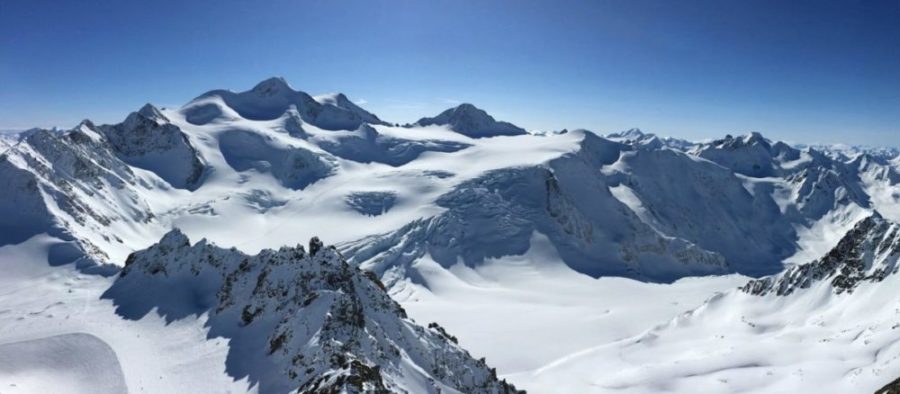Featured image: Pitztal Glacier, Austria by annca on Pixabay
Paper: Increased Subglacial Sediment Discharge in a Warming Climate: Consideration of Ice Dynamics, Glacial Erosion, and Fluvial Sediment Transport
Authors: Ian Delaney and Surendra Adhikari
Many glaciers erode rock as they slide downhill along their valleys, producing loose material called subglacial sediment. In the absence of climate warming, this sediment can follow one of two paths. Some sediment is trapped for long periods of time under the higher-altitude parts of glaciers, where the ice rarely melts. A large portion of the subglacial sediment, located in the melting-prone lower portions of glaciers, is washed downstream by meltwater.
Sediment transported from under glaciers can be beneficial; for example, this sediment can help build up coastlines threatened by rising seas. That’s one reason why geologists are working to understand how sediment delivery by glacial meltwater might change in a warming world.
Ian Delaney and Surendra Adhikari built a new computer model to test how climate warming—and associated glacial melting—might change the amounts of sediment released from beneath glaciers. Simulating the processes of glacial bedrock erosion, melting, and sediment transport by meltwater, they found that warming-induced melting could cause up to 8-fold increases in the export of existing sediment from glaciers over the next 100 years, even though the creation of new sediment by glacial bedrock erosion declines as glaciers shrink.
The authors attribute this result to the fact that as the climate warms, higher and higher altitudes will experience ice-melting temperatures. Warming will melt the upper portions of the glacier that previously did not experience melting, causing the new meltwater to carry away sediment stored beneath the upper glacier. In the absence of warming, meltwater could only reach the lower parts of the glacier and less subglacial sediment would be released. Warming-driven increases in the altitude where glacial melt occurs could therefore be the cause of massive increases in glacial sediment release.
Of course, this can’t go on forever. If sediment release from beneath glaciers outpaces sediment production by glacial bedrock erosion for too long, the reservoir of sediment beneath the glacier will run low.
The authors note that predicted sediment release in their model depends heavily on the initial amount of subglacial sediment present. Unfortunately, geologists don’t have complete information about how much sediment is stored beneath glaciers globally. Right now it’s impossible to say how long elevated sediment release could last, or where on Earth would be most affected.
Extra sediment sourced from melting glaciers may temporarily help protect some coastal landscapes against sea level rise, but that’s likely to be small comfort compared with the damage to Earth caused by the permanent loss of glacial ice.

Do melting glaciers release extra sediment? by Charlie Shobe is licensed under a Creative Commons Attribution-ShareAlike 4.0 International License.

